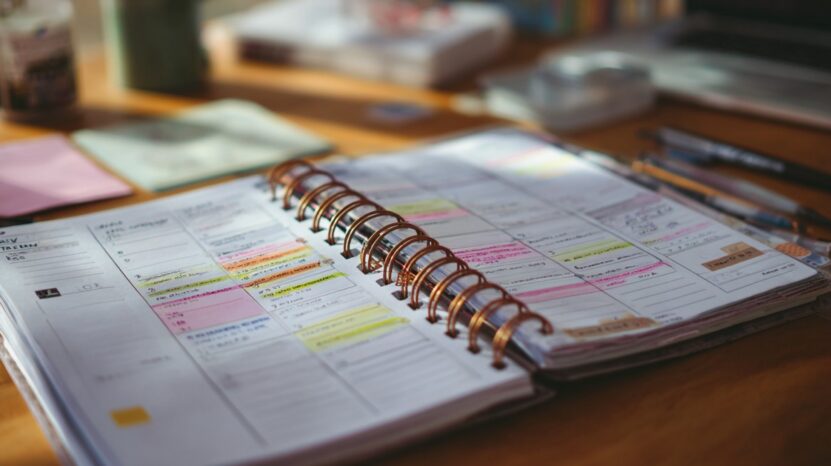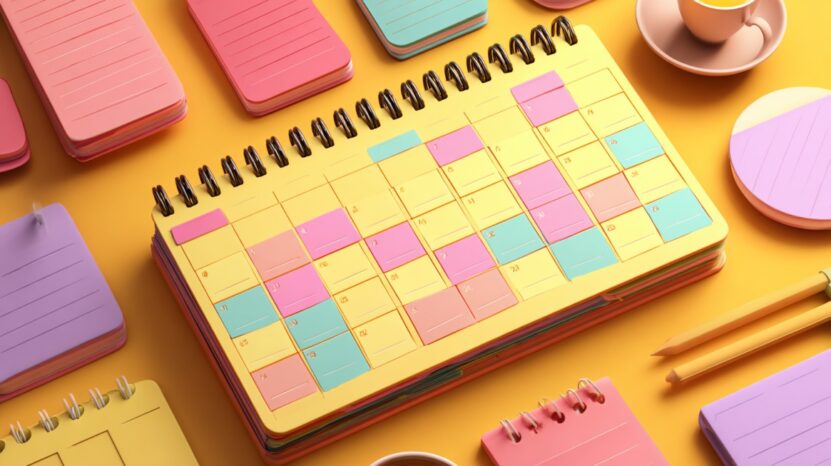
Share Post:
Students juggle an overwhelming load, lectures, assignments, part-time jobs, social obligations. With limited hours in a day, things often spiral into procrastination or burnout. Time blocking offers a structured way to tackle this chaos. It’s a scheduling technique that assigns tasks to specific periods, creating a visual map of where time goes.
By using time blocking, students can reduce procrastination, increase focus, and gain better balance. The approach helps create mental clarity, leaving more energy for academic and personal growth.
Without further ado, let us begin.
Table of Contents
ToggleStep-by-Step Time Blocking Process
| Time | Activity | Purpose |
|---|---|---|
| 8:00 – 9:00 | Morning routine | Prepare and review the day |
| 9:00 – 11:00 | Class or lecture | Core academic engagement |
| 11:00 – 12:00 | Review notes | Reinforce learning |
| 12:00 – 1:00 | Lunch/break | Recharge |
| 1:00 – 2:30 | Deep study session | Tackle difficult tasks |
| 2:30 – 3:00 | Break | Rest and move |
| 3:00 – 4:00 | Homework | Work on assignments |
| 4:00 – 5:00 | Errands/flex | Catch up or relax |
| 5:00 – 6:00 | Dinner | Recovery time |
| 6:00 – 7:30 | Light study/planning | Finish or prep for next day |
| 7:30 – 9:00 | Personal time | Hobbies/social/fun |
Time blocking becomes easier to follow when broken into structured actions. Instead of rushing into color-coded calendars, start with clarity.
The process requires reflection, planning, and consistency. Each step builds on the last.
Step #1:

Begin by writing down every single obligation, no matter how small. Include school-related responsibilities, personal tasks, and social commitments.
Avoid leaving anything out; clarity comes from visibility.
- Class lectures and labs
- Assignments and project deadlines
- Part-time job shifts
- Club meetings and extracurriculars
- Daily habits like working out or meditating
- Phone calls or planned time with friends
Once the list is built, sort tasks using the Eisenhower Matrix, a decision-making tool designed to rank urgency and importance:
Eisenhower Matrix breakdown:
- Urgent and important: Handle immediately
- Important but not urgent: Schedule for later
- Urgent but not important: Delegate if possible
- Neither: Remove completely
Prioritizing tasks before blocking them on a schedule reduces guesswork and helps prevent reactive planning.
Step #2: Understand Your Energy Patterns

Not everyone feels alert at the same time. Some students hit their stride in the morning, while others thrive after sunset.
Matching task intensity to natural energy rhythms increases output without requiring more time.
- Morning: Handle high-effort tasks like complex math problems, coding, or lab preparation
- Midday: Schedule writing sessions, group work, or independent study
- Evening: Do a light review, skim notes, complete flashcards, or brainstorm creative ideas
Track energy levels over a week using a simple log. Observe when focus is highest and when fatigue hits.
Schedule difficult work when attention is sharp, and leave routine tasks for low-energy periods.
Step #3: Choose Your Tools

Time blocking works best when supported by tools that match your style. Digital or analog, pick the method that feels intuitive and sustainable.
Stick with tools long enough to build a routine.
- Google Calendar: Perfect for those who live online and enjoy reminders
- Todoist: Blends to-do lists with block-based scheduling
- Notion: Works well for customization lovers and those who track everything
- Paper planner: Great for tactile learners who prefer handwriting
- Time block-specific apps: Try TimeBloc or Sunsama for focused layouts
Use color coding for categories like school, personal, and social. That adds visual clarity and helps spot imbalances quickly.
Step #4: Create Your Base Schedule

Start building the weekly template with fixed events first. These include anything with a non-negotiable time slot.
- Classes and labs
- Work shifts
- Medical appointments
- Standing meetings
Next, insert focused study blocks. Aim for 60–90 minutes per session, followed by short breaks. Place review sessions toward the end of each day or week for reflection and spaced repetition.
Include flexible buffer periods. That helps absorb the impact of late starts, unexpected assignments, or mental fatigue.
- Overflow buffer blocks: 30–60 minutes per day
- Transition windows: 10–15 minutes between tasks
- Backup time slots: Reserved for task spillover
A balanced base schedule reduces overcommitment and adds rhythm to each day.
Step #5: Build Breaks and Recovery Time

Time blocking only works if it accounts for rest. Working non-stop kills momentum by the end of the week. Breaks protect energy and promote consistency.
- Short breaks: After every 45–90 minutes of work, take 10–15 minutes to walk, stretch, hydrate, or reset
- Longer breaks: Schedule 20–30 minutes after heavy blocks like exams or project drafts
- Daily unstructured time: Keep one hour open for creativity, free reading, or simply doing nothing
Recovery time is where ideas settle and burnout is avoided. Respecting mental and physical limits creates a foundation for long-term academic growth.
Benefits of Time Blocking for Students
Time blocking does more than organize hours; it reshapes how students interact with their time. When each hour has a designated purpose, focus sharpens.
Instead of multitasking or wandering between assignments, attention stays on one task at a time. That single-task mindset promotes better retention and stronger results.
Decision-making becomes lighter. Planning tasks removes the mental burden of figuring out what to do next. With a block already set, action replaces hesitation.
Intentional scheduling also fosters a greater sense of control. Time gets divided between academics, personal care, social life, and rest. When each area has its place, students stop feeling pulled in all directions.
Those with ADHD or executive function difficulties benefit even more. A clear, visual structure keeps overwhelm in check and builds daily momentum.
Time blocking becomes more than a calendar; it becomes a framework for calm and productivity.

- Strengthened focus through single-task commitment
- Reduced distractions and procrastination
- Elimination of decision fatigue
- Scheduled time for both work and recovery
- Visual structure for balancing competing priorities
- Increased support for students with attention challenges
Time blocking removes the guesswork and puts students back in the driver’s seat of their routines.
Advanced Time Blocking Techniques for Students
Once the basics are in place, time blocking can evolve with academic demands.

- More precision
- Better rhythm
- Greater task control
Instead of working harder, students start working smarter. Several techniques can bring new life to the calendar. Each one targets a specific challenge: vague planning, scattered focus, or poor task variety.
Below are practical strategies that can be applied immediately.
SMART Goals for Study Blocks
Vague study intentions lead to wasted time. Replace open-ended plans like “review history” with precise actions such as “outline Chapter 7 and complete timeline graphic.”
- Specific
- Measurable
- Achievable
- Relevant
- Time-bound
Task Batching
Switching between unrelated tasks drains focus. Batching helps by grouping similar work together.
- Check and respond to emails once per day
- Review all lecture slides in one session
- Outline multiple writing prompts before drafting any
Day Theming
Assign certain subjects or task types to each day of the week. Day theming creates rhythm and reduces cognitive friction.
- Monday: STEM subjects
- Tuesday: Writing assignments
- Wednesday: Review and revise
- Thursday: Practice tests
- Friday: Admin work or catching up
Summary
Time blocking offers students a flexible structure to navigate daily demands. Starting small and being consistent sets the foundation for long-term results.
Matching energy levels with tasks and allowing for recovery time helps maximize output while minimizing stress.
With a little planning, time turns into a powerful ally, not a constant enemy.
Related Posts:









